Why Microsoft Viva Skills Could Disrupt The HR Tech Market
This week Microsoft announced a major feature in Viva that is likely to disrupt the HR Technology market: skills. And the Skills in Viva system is not just a skills inference engine, it’s a skills-based learning system, a way to find mentors and experts, an employee development platform, and an internal mobility tool that looks like a talent marketplace.
Why is this disruptive to the HR Technology market? If Viva becomes successful in corporations (more than 35 million people use it already), much of the high-priced skills technology companies use becomes less important. And as we all know, the system that “faces the user” is the one everyone has to work around.
Let me explain. The skills engine in Viva is built on the taxonomy of skills from the LinkedIn Skills Graph, and then adds inference from all employee activity in the Microsoft Graph. This means that out of the box it immediately makes sense, and employees can update it easily. Over time, as Skills in Viva expands in usage, it will bring in skills from external systems (below) and give employees many ways to curate, view, and update their skills. And it’s all available in your Microsoft profile.
For Microsoft 365 customers these profiles are important: they hold IT security credentials, job title, level, location, schedule, and online activity history. While we often take the Microsoft profile for granted, it actually serves a critical role in security and identity management, making it “the corporate profile” for most employees in Microsoft shops.
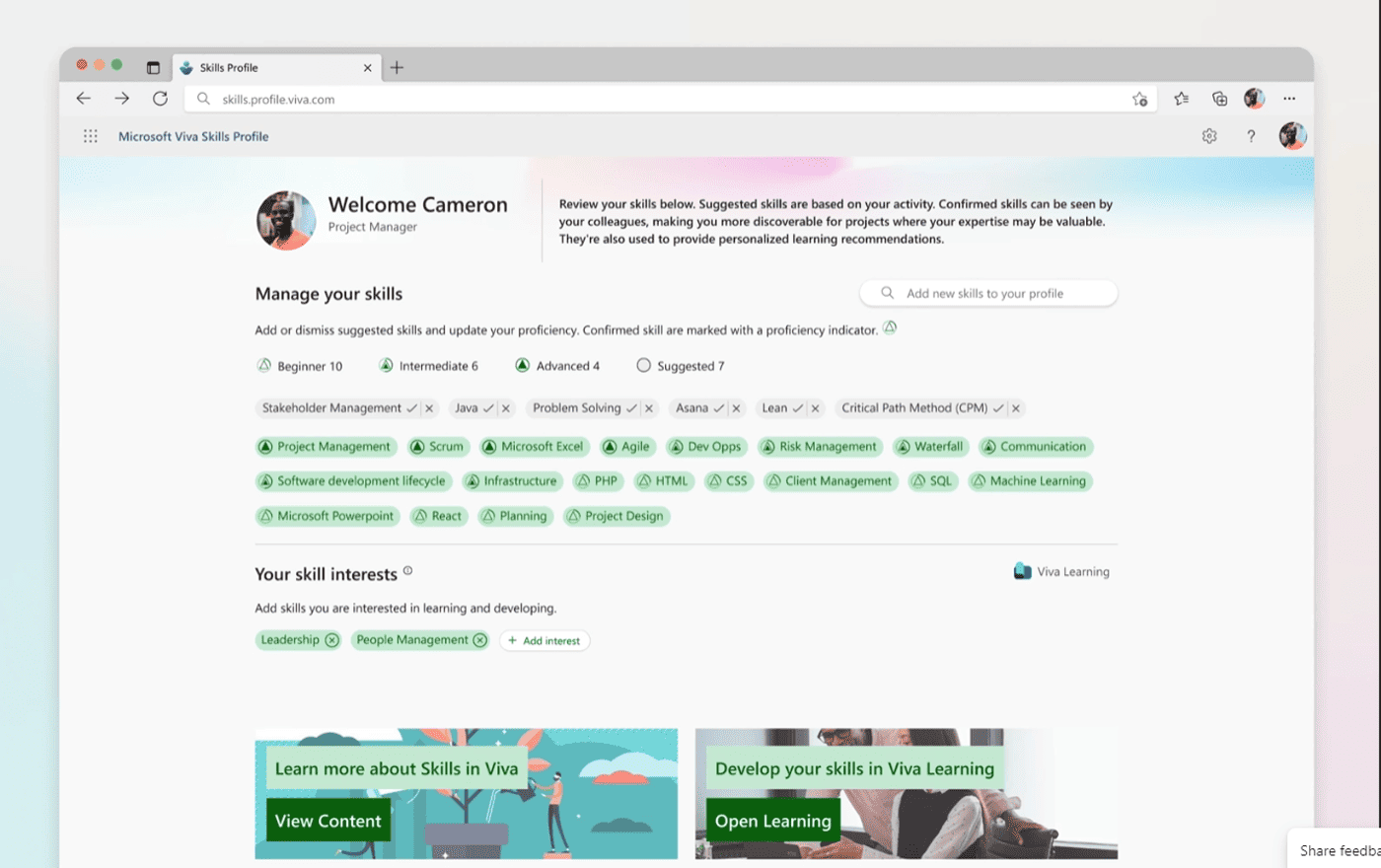 |
As this profile starts to get filled in, the profile becomes more useful. As you can see below, employees can mouse over another employee’s photo and see their card with skills and other information. Viva can use this skills information to recommend courses, learning paths, mentors, assignments, and later new jobs in your company. And administrators can use Viva Insights to look at trending skills, pools of critical skills, and other analyses of skills and capability in the company.
In many ways this is the nirvana of “the skills based organization” we’ve all been looking for, and now it’s embedded into our everyday systems of productivity.
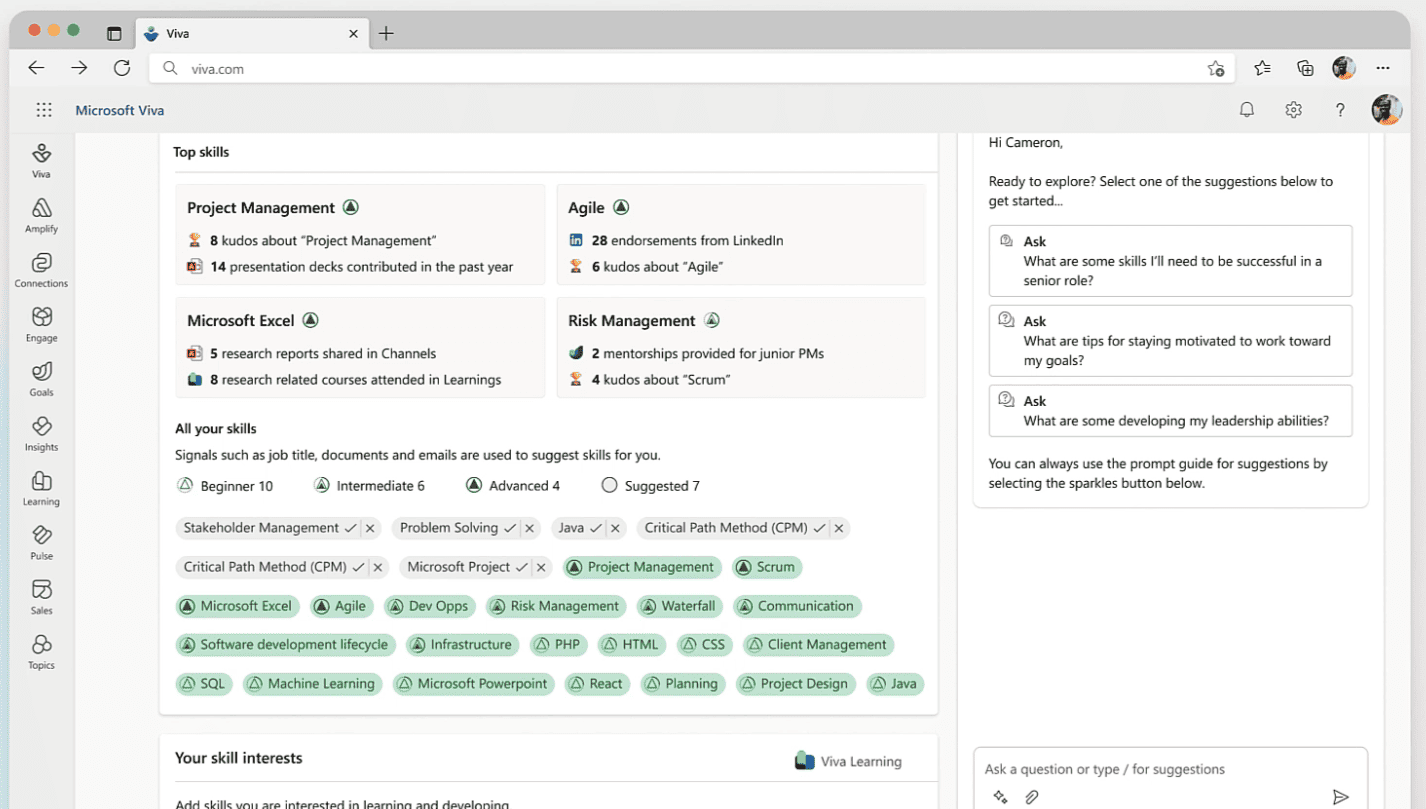 |
What about all the back-end systems that infer, define, develop, and assess skills?
Well Skills for Viva is an open system and the company is looking for ecosystem partners. Out of the box Viva Learning partners (including LinkedIn Learning with 16,000+ courses) will fuel this engine. Other sources include information from HCM platforms, LMS systems, ATS systems, job descriptions, data from documents and work activity, and of course the employee’s own self-described skills. Microsoft already has linkages to SAP (Microsoft’s internal HR system), Workday, and others HR systems, and we can expect these partnerships to accelerate.
And once this skills graph is populated, Viva Learning gives employees recommendations for training, career paths, mentors, and even open jobs (coming later). See how disruptive this becomes for incumbent HR technology providers?
What happens to all the fancy tools we’ve been buying for skills inference, skills tagging, recruiting, and learning (Cornerstone, Degreed, Eightfold, Beamery, Gloat, Fuel50, SuccessFactors, Workday, and many more)? Well they become back-end or feeder systems to Viva. And the Viva Skills taxonomy (the list of words defined as skills) is built from the LinkedIn skills graph, so it’s already well populated. As more companies use it, the Skills for Viva taxonomy will deepen. (LinkedIn is now rationalizing its learning and recruiting skills taxonomies.)
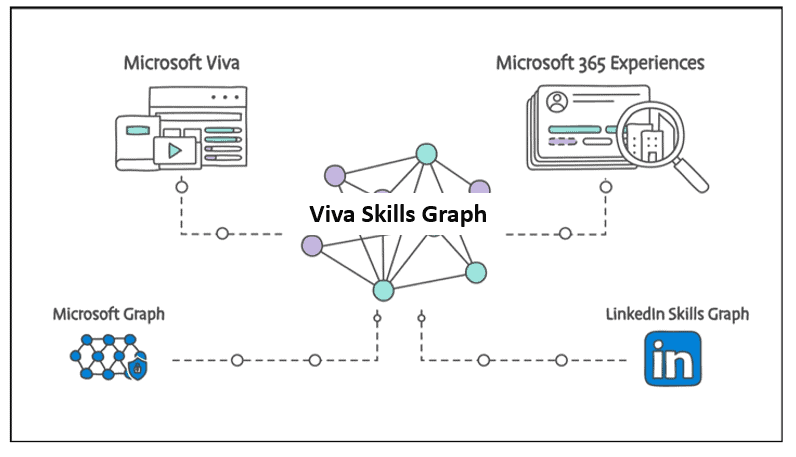 |
I think Viva customers are going to want their back end systems to manifest information through Microsoft. Why? Because it’s easier for employees to find and use it. If I have to log into Workday or Gloat to find my skills profile, I may only use it once a month. My Microsoft workspace is always available, so I can use it in the flow of work.
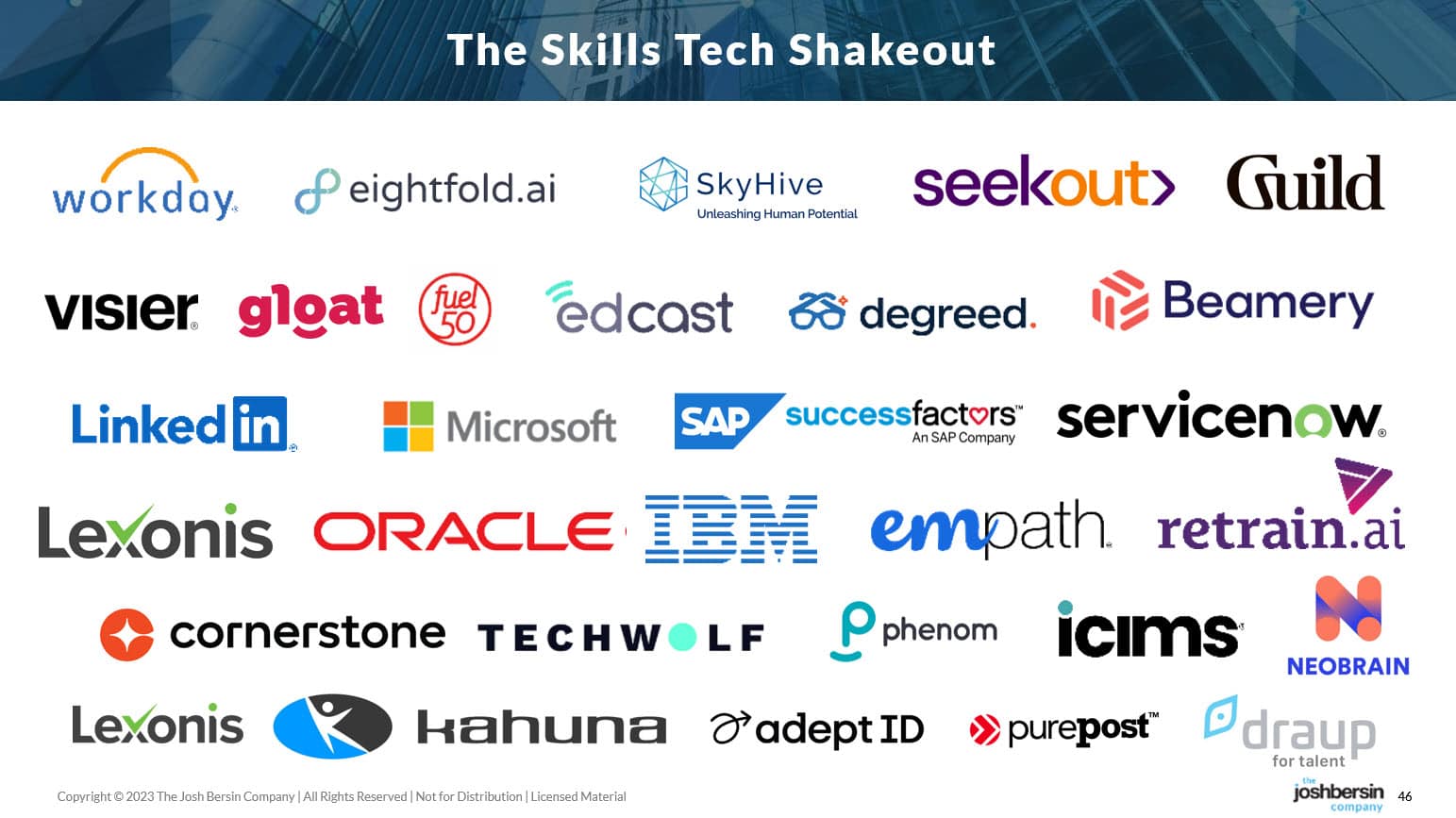 |
Skills Intelligence
Consider the big problem we’re trying to solve here: understanding skills across the company. While your ERP/HCM could serve as a single system of record for skills, it’s not easy to access or use this data. Microsoft would argue this data belongs in Viva, where employees can see it, edit it, and use it. And I have to agree.
(Note that Visier also introduced a pretty powerful Skills Intelligence Engine you can use to compare skills against hundreds of other dimensions – tenure, role, gender, etc. including time series analysis.)
Many Use Cases Are Now Possible
Imagine, for example, I’m a manager and want to assemble a small team for a project. Before I fire up Teams and send the invitation, I may just look at the combined skills of the group I’ve assembled (Viva has a tool for this) and decide if I have the right people. These kinds of use-cases are simply not available in back-end HR Technology platforms.
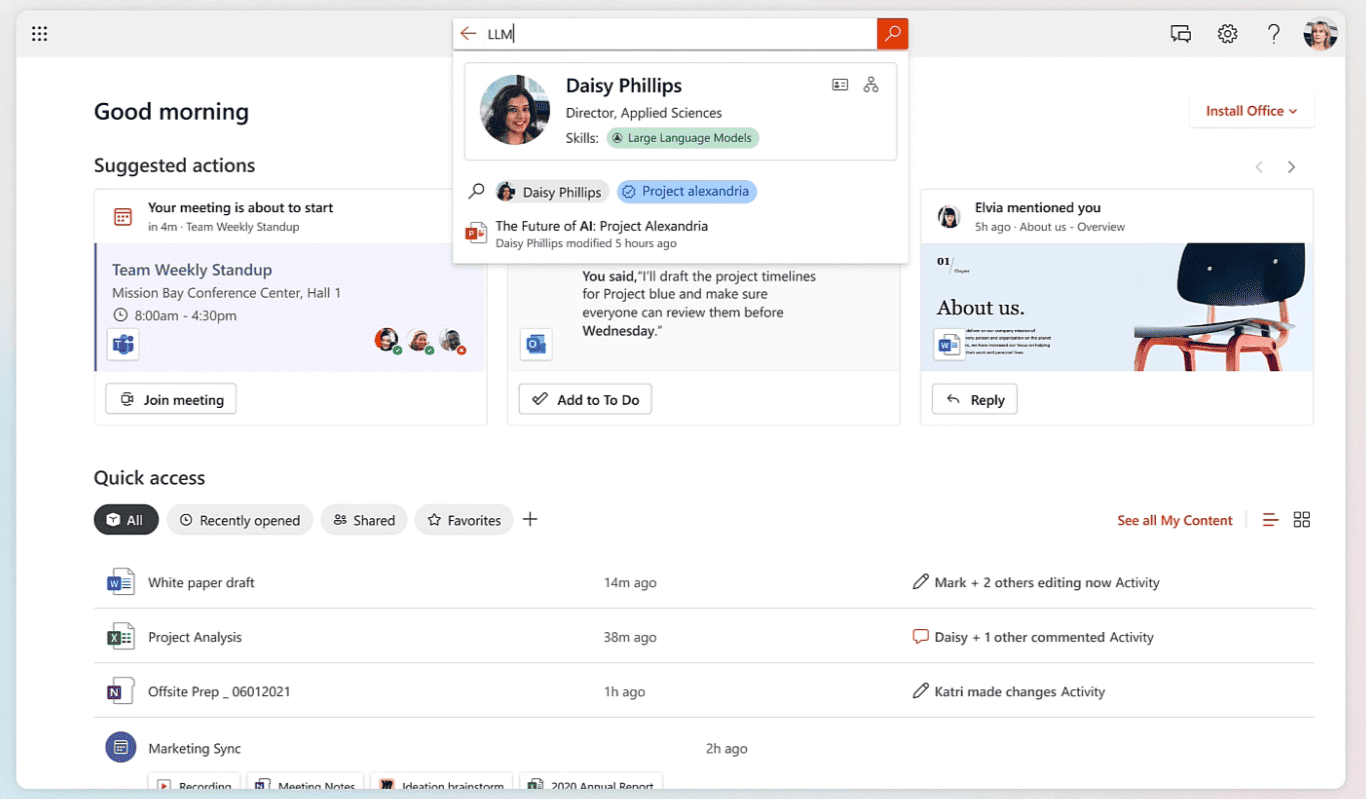 |
Remember that Microsoft is masterful at building easy-to-use employee productivity software, so Skills in Viva is pretty much “walk up and use.” I never forgot my days at Sybase in the early 2000s when Microsoft introduced SQL Server for NT. Its ease of use immediately froze our market for high-end unix-based database technology because it was just so easy to learn, use, and administer.
Now I’m not saying that Skills in Viva will replace these other sophisticated tools. But over time, if you think about your HR Tech stack, I can’t see why a Microsoft shop would not want to use this system to bring skills tools to the everyday employee. And that draws attention and money away from back-end tools.
And there’s more: the Microsoft Copilot.
As you see in the demos, not only can employees fill in their profile, take courses, find mentors, and look for projects – they can ask the Copilot for development tips and the AI assistant will be able to figure out what learning, projects, and activities may help them get promoted. Viva Learning now has a tool to use AI to build custom learning paths, so HR managers can build career programs in things like “prompt engineering” or whatever is new and important in your company. No need to hack around the LMS or LXP to do this any more.
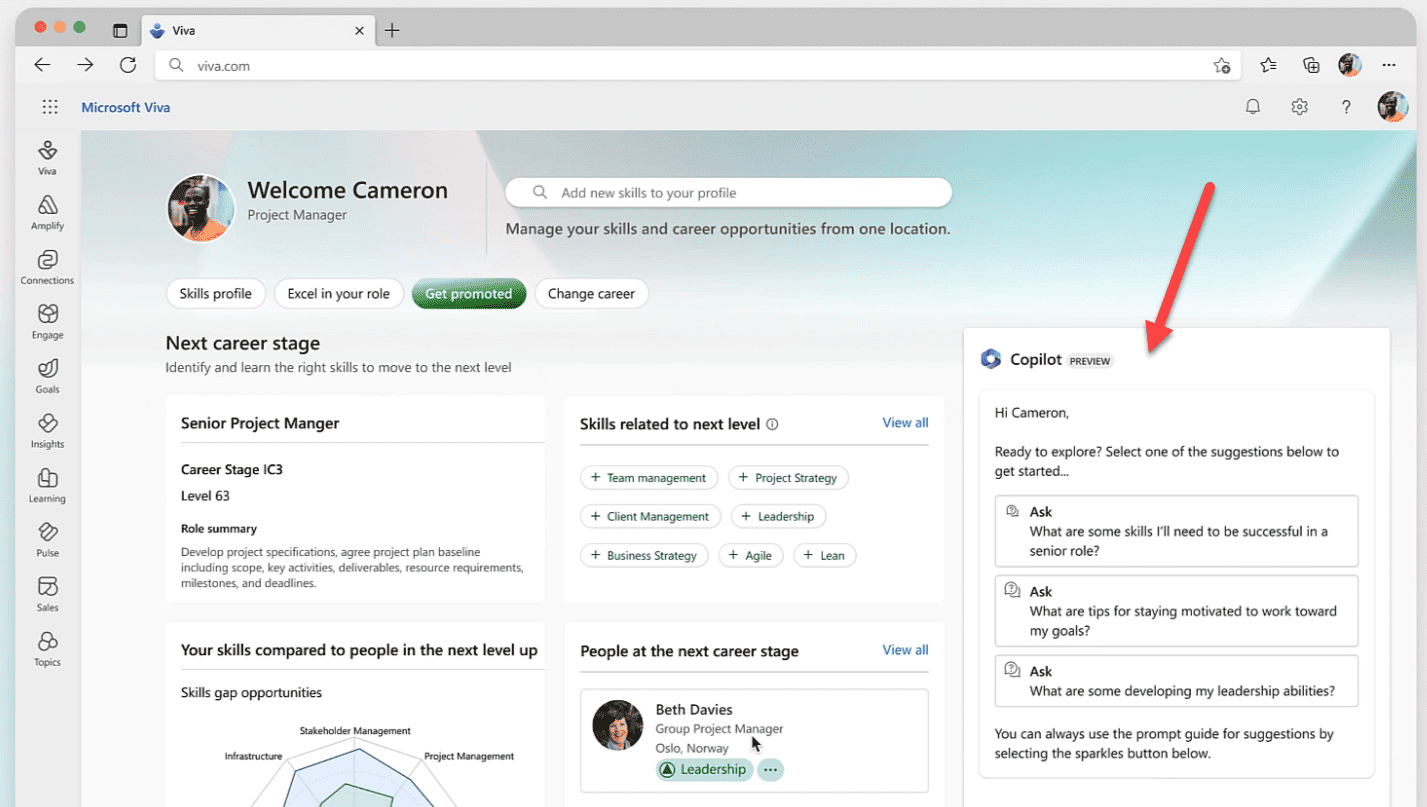 |
Of course there is a cost to this elegance. You have to pay for Viva (currently $12 per user per month for all modules) and you have to commit yourself to Microsoft’s roadmap. Two years ago I would have said that’s a little bit of a risky bet, but today, with massive corporate adoption, the risk of this decision is low.
As with any new technology, the Microsoft stack is complex and has many arcane features. And Viva Learning and Skills are still quite new. But many of us grew up with Microsoft tools and we know how they work. In fact more than 70% of IT departments bet their careers on this stack. And Microsoft does an excellent job of training, supporting, and updating IT professionals about how these systems fit together.
I’m not telling you to throw away any of the important skills technology you have. But I do believe you are going to want to look at Skills for Viva. The combination of Microsoft’s design skills, AI infrastructure, ecosystem partners, and integration with LinkedIn make it a solution you cannot ignore.
Additional Information
The Learning & Development SuperClass – New Certificate Program From The Josh Bersin Academy
Building A Company Skills Strategy: Harder (and More Important) Than It Looks
Understanding AI in HR: Research Study
The Role Of Generative AI In HR Is Now Becoming Clear
People Analytics Evolved: Systemic Analytics Powered by AI
The HR Tech Workshop, Certificate Program By The Josh Bersin Academy


